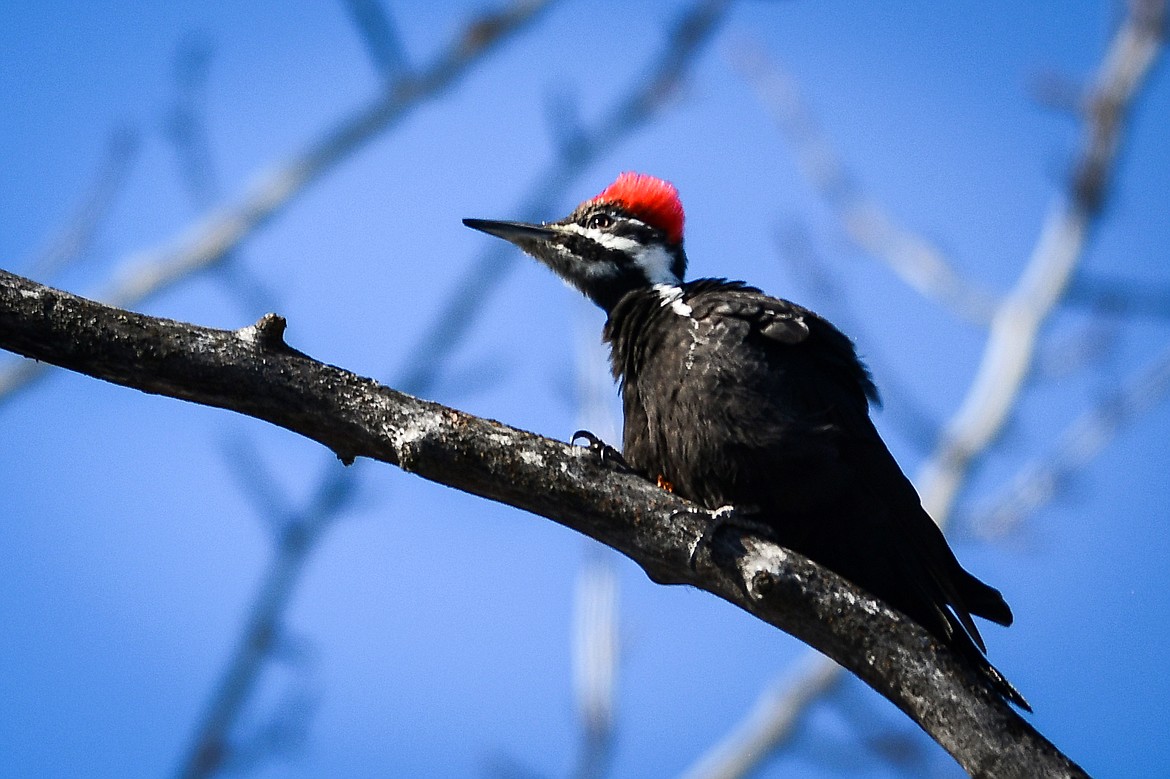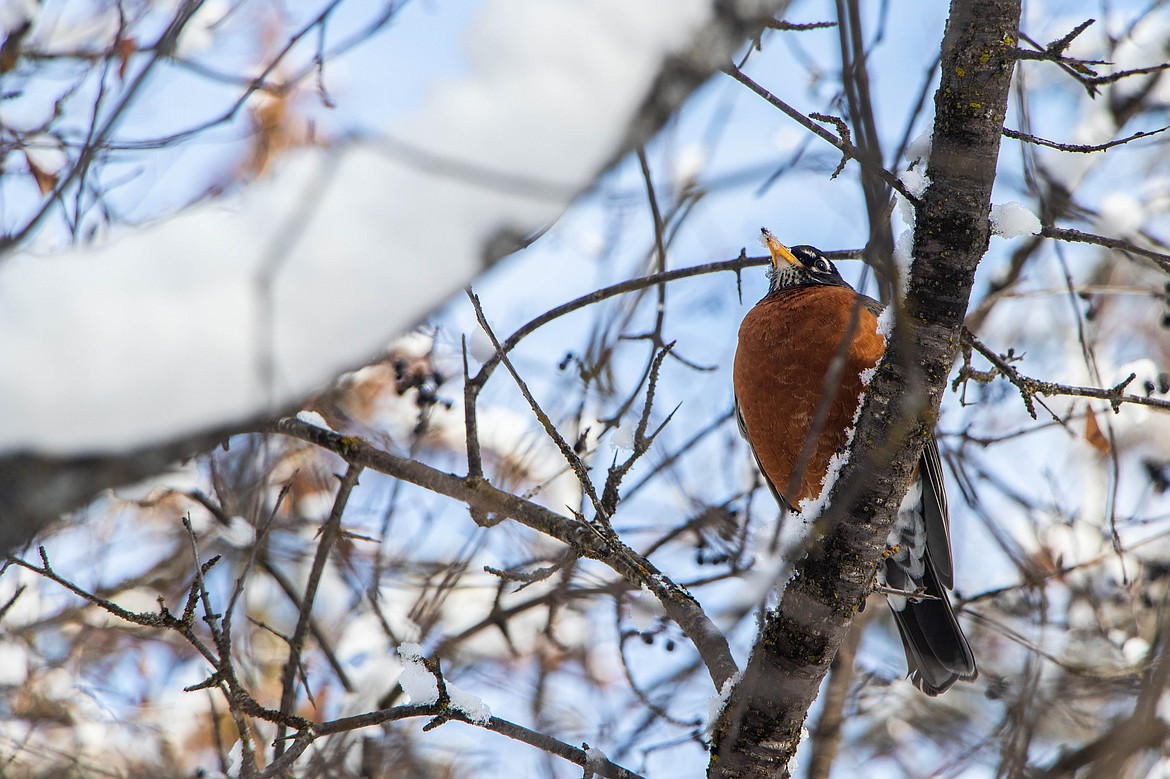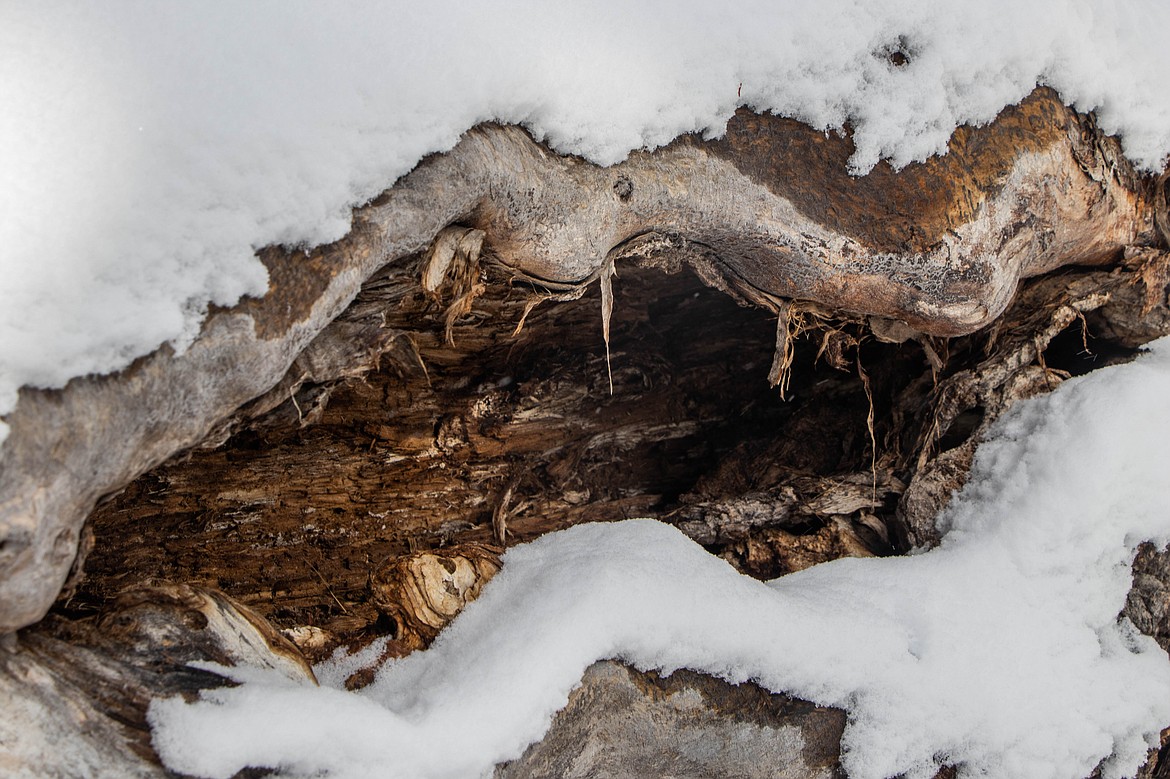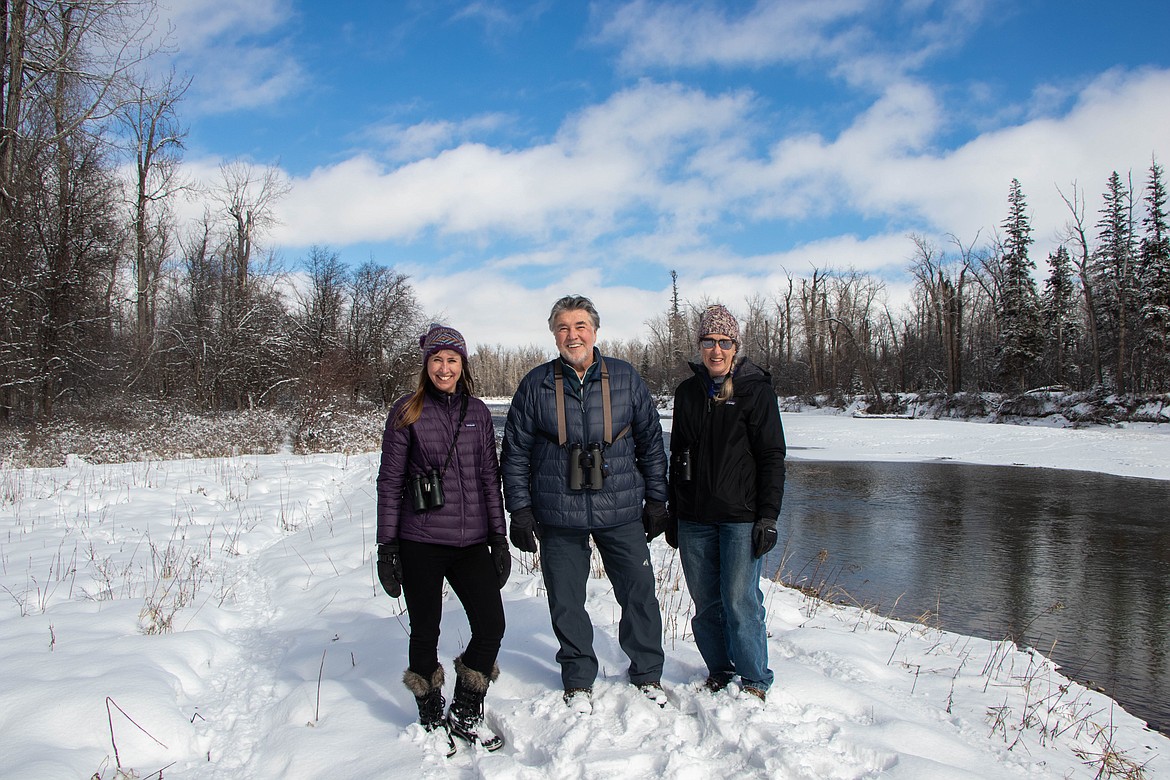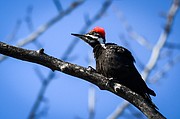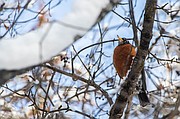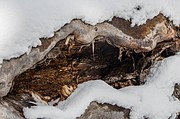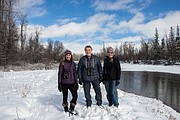Owen Sowerwine rich with natural habitat
The Owen Sowerwine Natural Area is a prime example of healthy land.
Hollowed out cottonwoods stand tall in the area with bare branches; others have fallen, splitting the trunk in half, creating a cavity for the myriad of wildlife that will travel through.
In its messy, dead and decaying state, Owen Sowerwine is healthy, said Laura Katzman, a land protection specialist with the Flathead Land Trust — it's natural. For decades, many groups around the Flathead Valley have worked to protect this area to conserve that natural health and habitat.
The natural area – a 442 acre-tract of land just half a mile east of Kalispell – currently approaches its next step of preservation: a conservation easement that protects the land in perpetuity. Besides its trails, a foot bridge, and a couple of bird houses, the land is mainly a place for animals alone.
“This means that over 400 acres of really natural, excellent river bottom habitat just close to the city limits of Kalispell will be maintained in the future for birds, fish, wildlife and for people to enjoy,” Katzman said.
Owen Sowerwine Natural Area is a crucial parcel of riparian land, full of cottonwoods and known for its bird population, as it is designated as a State Important Bird Area by Montana Audubon.
In the wintertime, it is typical to see black cap chickadees among the branches; a bird that weighs only as much as three pennies.
In the spring, pileated woodpeckers – the largest species of woodpecker in North America, standing a foot and a half tall – play a crucial role in creating habitat for other birds and wildlife by creating cavities in the standing dead and dying trees, known as snags.
The parcel consists of a large island, portions of other nearby islands, some mainland areas, and is at the confluence of the Flathead and Stillwater rivers, making it a piece of important land for lots of wildlife, both on air and foot.
The land is named after Flathead conservationist Owen Sowerwine. Sowerwine served on the Flathead County Park Board, as well as the State Land Board as an avid outdoorsman, dedicated conservationist and civic leader, according to Flathead Audubon. Sowerwine died in January 1975 after much work on the Owen Sowerwine area.
“I consider him as someone who was ahead of his time,” said Gael Bissell, with the Flathead Audubon.
Sowerwine was raised in New Jersey and spent his summers in Anaconda with his family at a place on Foster Creek, according to David Sowerwine, his son. He was an Annapolis graduate and served in the Navy, after which he moved his family to Kalispell. He manufactured bricks for the high school, was involved in the rotary club, and led the group that funded the community college in the Valley. To many who knew him, he was a “marvelous individual,” according to his son.
After Owen died, David became the family overseer for the farm. They donated the land to the Flathead Land Trust in 1988, placing their own 157-acre property under a conservation easement, an act that David felt confident his father would approve of.
“My father’s vision for the valley was to do everything we could, as early on as we could, to conserve the valley,” David said in an interview last year.
The land itself is School Trust Land administered by the Department of Natural Resources and Conversation, meaning that its purpose is to generate revenue for schools in Montana. Currently, that revenue comes from license fees, paid by Audubon organizations, to designate the land as a natural area.
Finding a long-term, financially-sound solution outside of skyrocketing license fees to ensure that the habitat and wetlands remain intact has been sought for years, according to the Land Trust.
The effort began in 1976, when the Flathead County Park Board sent the Montana State Land Board a recommendation that the 442-acre piece of state school trust land be classified as a natural area.
The land was designated as class 4 land, meaning “for natural area use,” and in 1978 Owen Sowerwine Natural Area was officially created. The dedication ceremony consisted of Flathead County Search and Rescue members ferried participants to the big island in celebration.
The Flathead County Ark Board had leasing rights through 1995, until lease fees got too high. In 1996, the Flathead Audubon stepped forward to assume the lease and manage the area.
In 1999, with more lease fee increases on the horizon, Flathead Audubon joined with Montana Audubon to negotiate a long-term license for the area. The agreement was made in 2001, and was renewed in 2010. Currently, the license is assigned to make both Flathead and Montana Audubons the joint license holders – they pay the yearly license fee and management costs.
Without the license fees, according to Katzman, the land’s future as a natural habitat with public access was not secure. In order to generate revenue for schools, Owen Sowerwine theoretically could be used for cabin sites, agriculture, grazing, timber sales, or residential and commercial use.
To avoid paying hefty license fees while still ensuring the area is protected, Montana Audubon and Flathead Audubon have teamed up with the Flathead Land Trust to place a conservation easement.
“In State Trust Land, this is a very unique situation,” said Ann Maron, a Kalispell unit real estate specialist with the Department of Natural Resources and Conservation. She cited that in 2001, there was a statute passed authorizing a conservation easement on the Owen Sowerwine parcel.
The easement will go directly to the school trust fund to further bypass the use of licenses on the property, protecting the land while not disrupting school fundraising. According to Katzman, they have already raised just over half of the estimated amount needed for the easement – a total around $775,000.
“This is a way to permanently protect Owen Sowerwine as a natural area that the public can enjoy and use for conservation education,” Katzman said.
“We decided that a conservation easement was a viable alternative and the Land Trust stood up,” Gael Bissell said. The groups are currently in the fundraising and planning stage in anticipation of the easement going through.
There is currently no federal grant program available to purchase an easement because the land is state owned, meaning that the conservation will need to be completed by donation. Officials at the Flathead Land Trust says the project is accomplishable, referencing the Danford Property Conservation Easement in 2020.
With the added conservation easement, virtually nothing is changing, Maron said. The main change is a matter of funding; in fact, Moran said, the point is to secure – not change – the conditions that currently exist on the ground to preserve the area for the future.
Birds are a main reason many are seeking out a way to conserve the area. Owen Sowerwine has expansive habitat for around 160 species of birds; specifically birds that rely on riparian areas for nesting.
According to Amy Seaman, the director of policy and science at the Montana Audubon, only 4% of the state is riparian habitat; one half of all Montana’s birds nest in riparian areas come spring.
“There is a great assemblage of birds because there is a great habitat,” Seaman said about Owen Sowerwine. She also added how the area acts as a migration corridor for many other species as well.
According to the Flathead Audubon, they are hoping to issue their decision notice to the Land Board after fundraising and public comment is completed by the end of summer.
There are a few regulations to access the natural area. The area is for foot access only, no pets are allowed, no fires or camping, and no creation of shelters or other structures. Visitors are required to have a State Land Recreational Use Permit to enter the area.
The conservation easement will continue to protect the land’s natural health, Katzman said.
At the end of February, the parcel is seemingly quiet. Chickadees and robins sing and fly above the bare trees, dusted with snow. Some birds will return to Owen Sowerwine, to the same tree, to the same little cavity to nest, year after year. Others will rebuild a home when they return in the Spring. Nonetheless, hundreds of birds will occupy the parcel come May.
“It keeps growing, every year there is something new out there,” Bissell said.
It isn’t strange to see baby owls or hummingbirds peek their heads out of these tree nests in the springtime, adding to the loud chorus of songs that permeates the air and glides with the sound of the wind. For those at the Montana Audubon, Flathead Audubon, and Flathead Land Trust, preserving the land, and holding on to the ability to experience that, is what it is all about.



